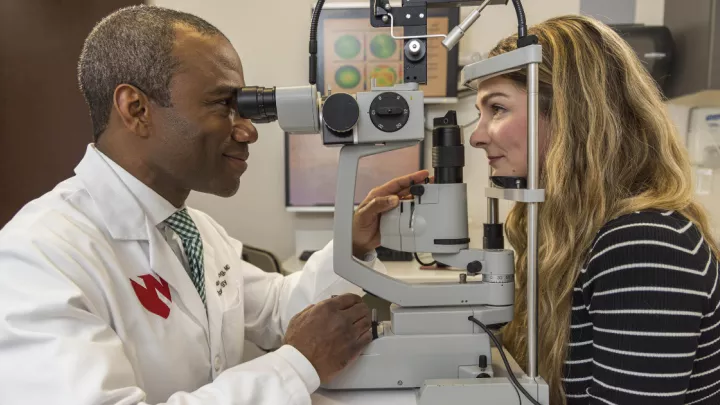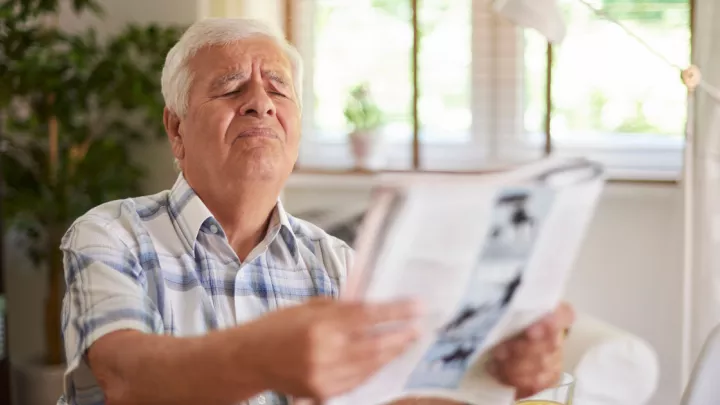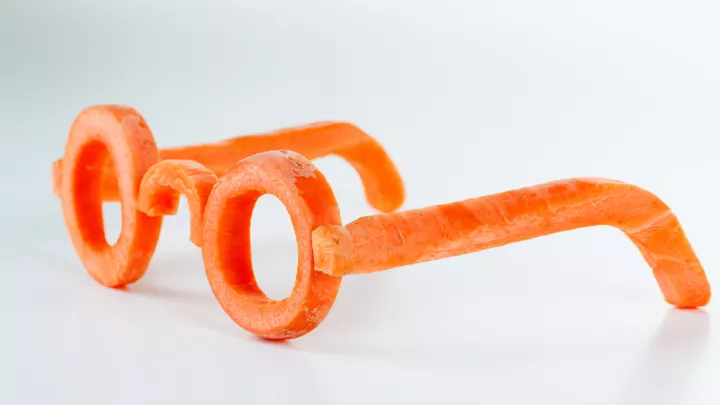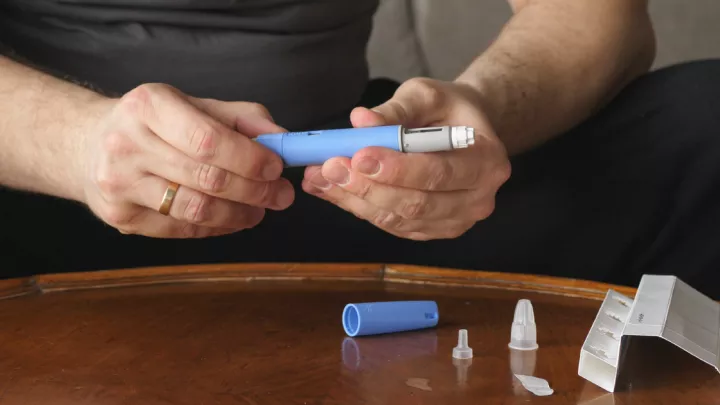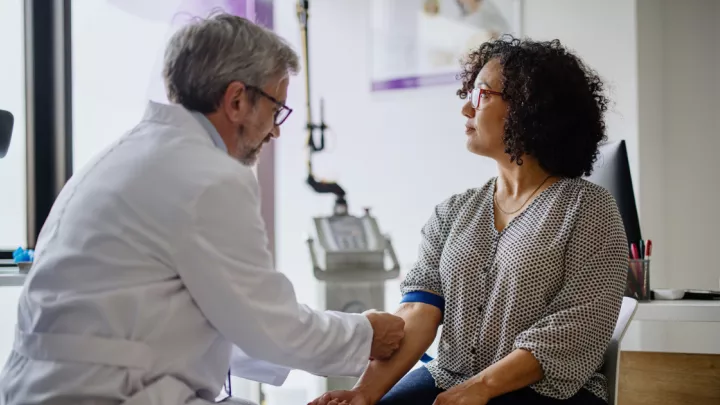What causes low vision, and what can you do about it?

Low vision – irreversible vision loss, which health care providers cannot correct with conventional glasses or medical or surgical treatments – can feel like a hopeless condition. If your vision loss is irreversible, you’re likely wondering if there’s any way to continue doing those daily activities that are central to your life. Luckily, the Weigel Williamson Center for Visual Rehabilitation offers a variety of ways to help you maximize the use of your remaining vision.
Often, patients with low vision have it because of a particular eye disease. “So, low vision isn’t a diagnosis per se,” says ophthalmologist John Shepherd, MD, director of the Weigel Williamson Center. “If an eye disease causes irreversible vision loss, then the person has low vision. In essence, it’s implying an impairment issue, and the patient is having difficulty with their vision doing day-to-day activities.”
According to Dr. Shepherd, this detail is why the distinction between disease and impairment management is vital to understanding and treating low vision. “Typically, disease management is what you’re going to the eye doctor for,” says Dr. Shepherd. “There are many eye conditions where we can manage an eye disease with glasses, medical and surgical treatments.”
But when your provider has exhausted these options, and you still have vision loss, it’s low vision. “At this point, while we can no longer restore eyesight, we can help the patient live with it as best they can, which is impairment management,” says Dr. Shepherd. “It’s concentrating on ways to live with their vision loss as best they can, be as safe and independent as possible, and maximize their quality of life.”
Causes and signs of low vision
As previously mentioned, eye diseases are the cause of low vision. “The three most common reasons I’ll see someone for low vision are macular degeneration, diabetic retinopathy (or diabetic eye disease) and glaucoma,” says Dr. Shepherd. “Other common causes are stroke and hereditary eye diseases.”
While many of these issues are frequently age-related, low vision affects people of all ages. So, if you have one of these or another eye disease you fear may be leading to low vision, there are several symptoms to be aware of. Some signs of possible low vision include:
- Blurred vision
- Partially missing vision
- Blind spots
- Problems with peripheral vision
If you believe you have low vision, staff at the Weigel Williamson Center for Visual Rehabilitation can use impairment management strategies to help you maximize the use of your remaining eyesight. “First, we find out what areas of daily living you’re struggling with,” says Dr. Shepherd. “We do a complete inventory of daily activities to find where you’re struggling and where you’d like to do better if possible.”
Crucially, part of this evaluation includes learning how a patient is adjusting or adapting to their vision loss. “Many people have depression associated with irreversible vision loss,” says Dr. Shepherd. Understanding these feelings is critical to holistically treating someone with low vision.
After this evaluation, your low vision specialist will do specific testing of your vision to better understand the quality and quantity of your remaining eyesight. These tests are not typical for a regular eye clinic but are vital for managing your impairment.
Treating low vision
Following these tests, your provider can address your low vision in three different ways:
- Devices and optical instruments
- Environmental adaptations
- Visual skills training activities
Devices and optical instruments
“Probably the number one reason people come to see me is because they’re struggling to read,” says Dr. Shepherd. By using devices that make the print appear bigger, bolder and brighter, most patients can more comfortably resume their favorite reading activities. Conversely, for patients struggling to see at a distance, there are devices to help magnify things further away, making it easier to see the television, watch a sporting event, or see a loved one at their recital.
“Depending on the patient’s needs, we’ll show them various optical devices and see how they respond to them,” says Dr. Shepherd. “If we find something promising, we have a program with our occupational therapy services that allows patients to try optical devices on a trial basis to see how they help them with their activities at home.”
Environmental adaptations
“Our occupational therapists can also understand people's struggles in their homes and recommend specific environmental adaptations to make it easier for them to live at home," says Dr. Shepherd.
For example, if you have trouble seeing appliance dials in your kitchen, there are magnifying tools or highlighting markers you can use to adjust the settings on your appliances more successfully. "These environmental adaptations allow patients to be safer and more independent," says Dr. Shepherd.
Visual skills training activities
Occupational therapists can also help with visual skills training activities like environmental adaptations. These activities can help if you have blind spots in your vision, for example. Such blind spots can result in parts of letters or words missing from your vision, which makes reading difficult.
“These individuals need to learn and understand where these areas are and how to strategically get their blind spots from what they want to see better," says Dr. Shepherd. Through visual skills training activities, you can learn to get the affected area off of what you want to see and bring your better vision onto it.
“This process might involve looking at the print a little off-center. So, if you adopt this new viewing position and use a magnifier, you may now read more easily,” says Dr. Shepherd. “We can do testing to better understand where these problem areas are and then help people through visual skills training activities.”
Medical insurers typically cover the services of the low vision specialist and the occupational therapist but do not cover the cost of optical devices.
Staying in the game
Although the prospect of irreversible vision loss is daunting, it’s not the end of the road. “If glasses and treatments aren’t working, there may be nothing more we can do for that eye disease, but it isn’t game over,” says Dr. Shepherd.
Low-vision specialists like Dr. Shepherd can do a lot to help you maximize the use of your remaining vision through low-vision rehabilitation. “None of it is going to improve your eyesight, but it’s going to improve your ability to use the vision you have to do things more easily,” says Dr. Shepherd.
“So, come to the Weigel Williamson Center for a low vision evaluation, and we'll see if there are ways to help you stay in the game regarding reading, seeing the TV, or whatever you want to do.”
Weigel Williamson Center for Visual Rehabilitation
704 S. 38th Ave.
Omaha, NE 68105
Monday through Thursday
8 a.m. to 4:30 p.m.
Friday
8 a.m. to noon
Saturday and Sunday
Closed


